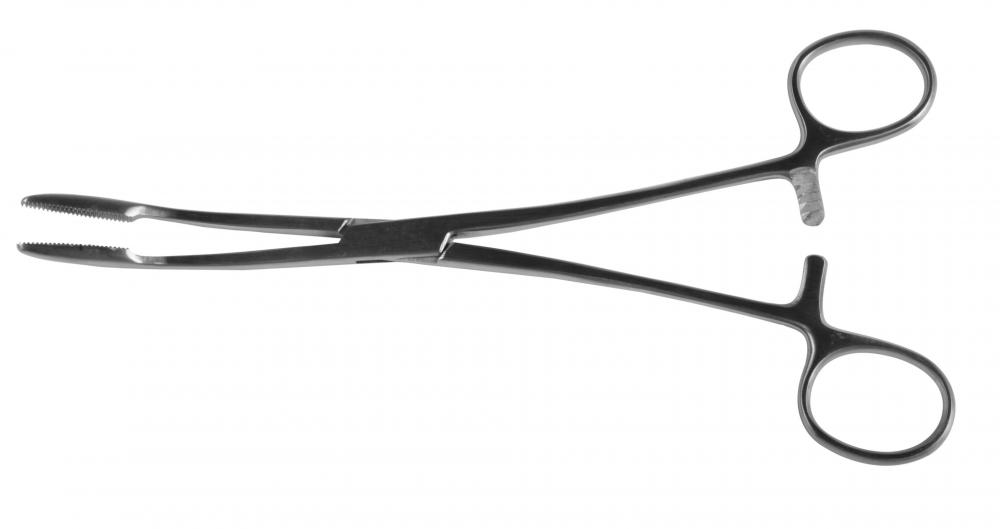At WiseGEEK, we're committed to delivering accurate, trustworthy information. Our expert-authored content is rigorously fact-checked and sourced from credible authorities. Discover how we uphold the highest standards in providing you with reliable knowledge.
What Is Bipolar Coagulation?
Bipolar coagulation generally involves a surgical procedure in which an instrument with two electrical poles that cauterizes and removes tissue is used. Surgeons commonly use this method of tissue destruction and removal when performing laparoscopic female sterilization. Physicians may also employ this complex process for tumor or other types of tissue removal. Bipolar coagulation has benefits for both the patient and the surgeon.
The instrumentation used in bipolar coagulation procedures typically includes a frequency generator. Modern units usually have more than one power setting, allowing physicians greater flexibility in deciding the amount of current to use during a particular procedure. Soft tissues generally require lower frequency impulses for effective removal than thicker, fibrous tissue. Bipolar coagulation systems generally produce lower levels of current than the original monopolar systems, which generated up to 2,500 volts. Bipolar systems usually only generate around 140 volts.

A disposable forceps or two probes containing two small electrodes are attached to the power unit. It is the forceps that receives the high frequency waves or diathermy. Some models may also contain an opening for irrigation fluid. Forceps made from titanium eliminate tissue adherence problems, and they may also be covered with a protective polymer, which also prevents tissue sticking and tearing.

During a tubal ligation, the surgeon uses the forceps to grasp a fallopian tube. Tissue damage occurs immediately, sealing vessels and creating blood clots. The forceps cut through the tissue at the desired region and the current does not extend beyond the point of contact, and the physician may remove up to 1.2 inches (3 centimeters) of the tube using separate cuts. Sterilization using bipolar coagulation gives the patient the option of later ligation reversal, and studies indicate that women undergoing reversals have a 60% chance of becoming pregnant.

Surgeons often use bipolar coagulation procedures for polyp or tumor removal as well. Under these circumstances, the surgeon may use forceps equipped with a looped wire, which encircles the polyp or tumor, cutting and cauterizing the tissue on contact. Probes might also be used to cut abnormal tissue, cutting and searing the tissue with each touch.

The benefits of using bipolar coagulation over conventional surgical methods include a decreased risk of thrombosis formation, minimal tissue damage without suturing, and hemorrhage prevention. With minimal or no bleeding, surgeons have increased field visibility, allowing greater ease of performing precise excisions. The procedure is also safe for patients who have defibrillators or pacemakers, and it does not require a grounding apparatus.
AS FEATURED ON:
AS FEATURED ON:














Discuss this Article
Post your comments